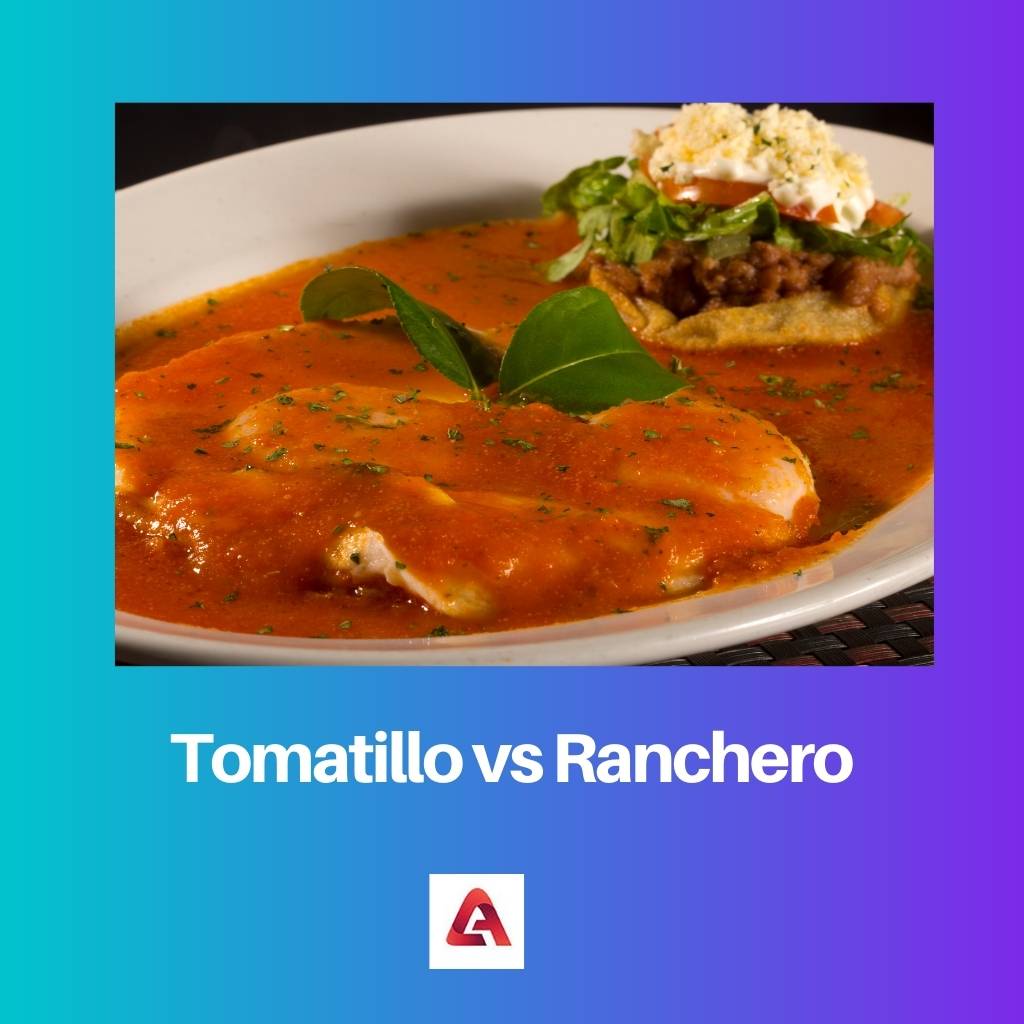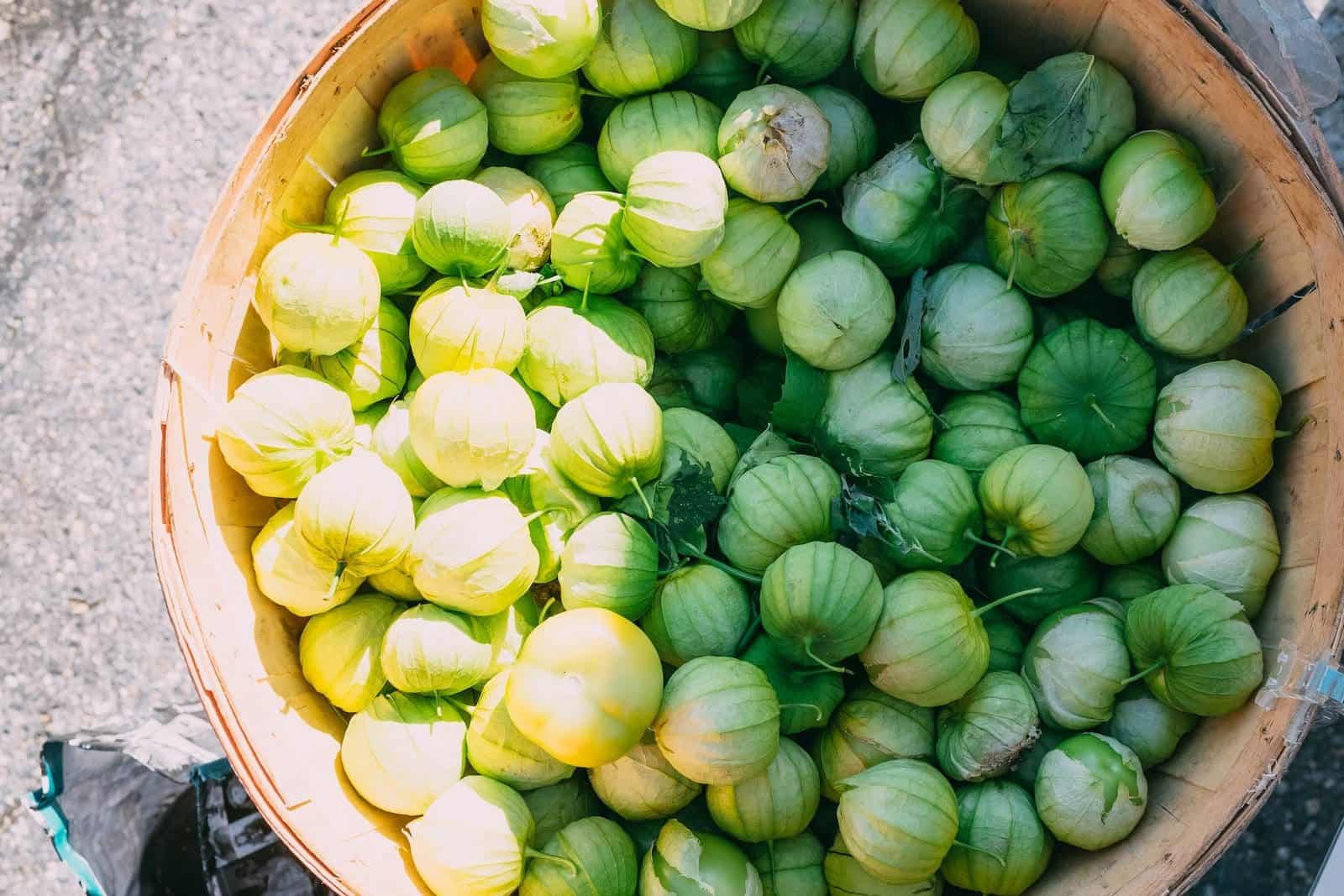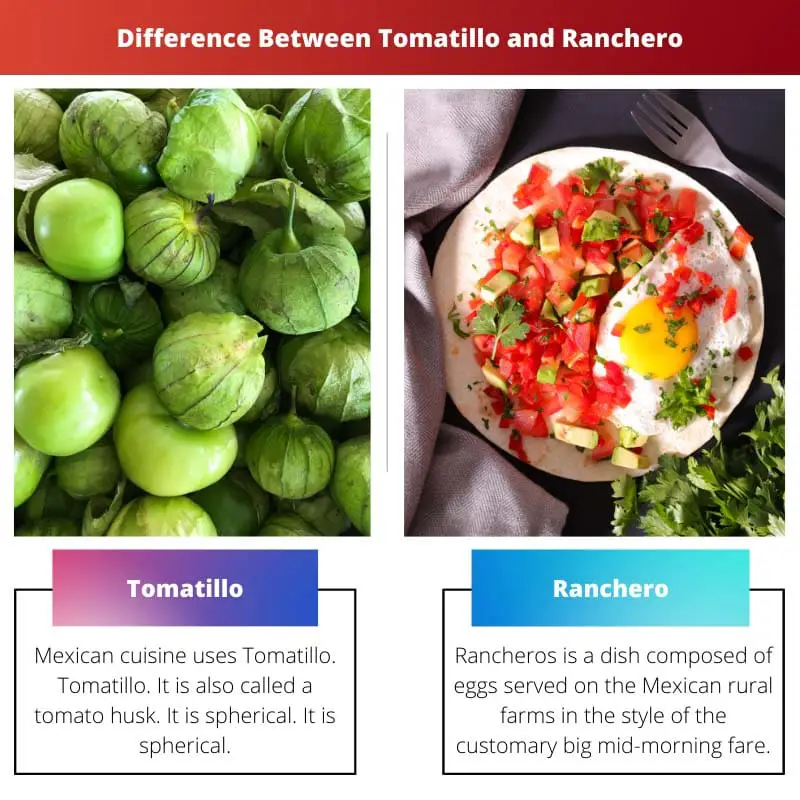Tomatillo and Ranchero are from the same species of plants. Their genus is common. Ranchero is frequently referred to as a ground cherry, and Tomatillo is referred to as a husk tomato.
The scientific name of Ranchero is Physios peruviana, and Physios exocarp is the scientific name of Tomatillo.
In Mexican cuisine, Tomatillo is a common ingredient. Tomatillo and Ranchero are two plants linked to the renowned Tomato plant. These are popular in the use of different savoury dishes and even desserts. They can also be cultivated in the home garden.
But one should know their allergies and only try them after full knowledge.
The family of Tomatillo and Ranchero is the same as that of the Physios family. They both are fruits contrary to what one would think. The taste is close to tomatoes, but the main flavour still has its differences.
They are filled with antioxidants, vitamins, and many other nutrients required by the body.
Key Takeaways
- Tomatillos are small, green fruits stapled in Mexican cuisine with a tart flavour and slight sweetness.
- Ranchero sauce, on the other hand, is a spicy tomato-based sauce used in Tex-Mex cuisine, featuring a blend of chilli peppers, onions, and garlic.
- Tomatillo is used as a base for green sauces, while Ranchero sauce is commonly used as a topping for dishes like huevos rancheros or enchiladas.
Tomatillo vs Ranchero
Tomatillos are small green fruits that are similar in size to a cherry tomato but have a papery husk and a tangy, tart flavour. Ranchero sauce, also known as salsa ranchera, is a tomato-based sauce that is used as a condiment or topping for various dishes like eggs, tacos, and grilled meats.

Tomatillo is a plant of Mexican cuisine that is rather basic. It belongs to a wide family of nightshades, which has several plants. They are green in color. However, different kinds of purple and yellow are also available. It’s a husk tomato, Tomatillo. When it turns green in color, it is harvested.
When it fully matures, it turns yellow-green or violet. It is used in numerous foods, for example, gazpacho and salsa.
Ranchero pepper is a moderate, medium-thick Chile poblano pepper hybrid. The chilli pods expand by 2.5-3.5 inches to about 4-5 inches in length. The peppers, like a poblano, start to grow dark green and ultimately grow to deep red. Both hues are great for cooking various foods.
They are pendants with bright green leaves and up to 36 inches in height of plants.
Comparison Table
| Parameters of Comparison | Tomatillo | Ranchero |
|---|---|---|
| Taste | Tomatillo’s taste is smooth. | Ranchero has a slightly sweet and sour taste. |
| Types | Tomatillo consists of more than six. | Ranchero consists largely of three types. |
| Skin | The skin of a ripe Tomatillo is sloppy or adhesive. | The skin of ranchero is not adhesive and dry on the outside side. |
| Color | The color of Tomatillo is Green. | Ranchero, in its ripe variety, is red or orange. |
| Usages | Tomatillo is used as salsa sauces. | Ranchero is used as salads. |
What is Tomatillo?
Mexican cuisine uses Tomatillo. Tomatillo. It is also called a tomato husk. It is spherical. It is spherical. It’s a common component of Mexican food. It is consumed crudely or cooked. Several dishes are added. It belongs to Mexico’s basic diet. It was grown in Mexico for the first time.
These plants are available everywhere in the United States.
It was important instead of tomatoes. They were an important element of different cultures, such as the Maya and the Aztecs. Physios is the scientific name given to Tomatillo in the 18th century. Mexican green tomato, or maltolate, is also known as tomatillo.
Tomatillo grows predominantly in Mexico’s Hidalgo and Morelos. In Guatemala, it is also found, where Tomatillo is referred to as a maltolate.
It is used in Mexican cuisine fairly often. Like a plant, it grows. It grows up to 3 to 4 feet high. The Bahamas, Florida, and Jamaica were later extended. Tomatillo’s export began in the 20th century. It was exported to Australia, Kenia, India, and South Africa.
Tomatillo is cultivated in wide areas and outdoor areas in particular.
They are cultivated as a household garden plant. In the United States, there are smaller Tomatillo plants. These plants are grown at various heights. Transplantation is the most frequent approach to cultivating Tomatillo. Greenhouses or beds are used for transplantation.
In the greenhouses, transplants are toughened to be planted outside.
No products found.

What is Ranchero?
Rancheros is a dish composed of eggs served on Mexican rural farms in the style of the customary big mid-morning fare. The basic meal consists of the egg fried served with a sauce fresco consisting of tomatoes, peppers, onion, and cilantro on a gently cooked or carved maize or flour tortilla.
Common supplementation consists of cooled beans, Mexican rice, and guacamole or avocado slices with garnished cilantro.
When the dish is disseminated across Mexico, varieties have appeared with fresh tomato-chiliad salsa rather than with wheat flour tortillas and pure chilli and enchilada sauce. This is a plant in the middle of the season, growing for about 70-80 days.
Non-Mexican additions such as cheese, saucer, and salad are other popular ingredients outside the traditional range of the plates. “Huevos divorciados” are just two eggs served the size of huevos rancheros, but each with another sauce, with a roji salsa and a green salsa.
The peppers, like a poblano, start to grow dark green and ultimately grow to deep red. Both hues are great for cooking various foods. They are pendants with bright green leaves and up to 36 inches in height of plants. The Yucatan and New Mexican enchiladas modulinos are similar dishes.
The traditional Mexican meal of eggs, poached in tomato chilli salsa, is another variety, drowned eggs.
No products found.
Main Differences Between Tomatillo and Ranchero
- Tomatillo is also known as husk tomatoes, whereas Ranchero is known to cape gooseberries.
- Tomatillo is 3-4 feet wide, whereas Ranchero is 2-3 feet wide.
- When it matures, Tomatillo turns youthful green or purple, whereas ranchero can be turned into gold or pale orange when it matures.
- Tomatillo is hard if it turns green, whereas when it fully ripens, Ranchero can be harvested.
- The color of the Tomatillo is Green, whereas the Ranchero in its ripped variety is Red or Orange.




